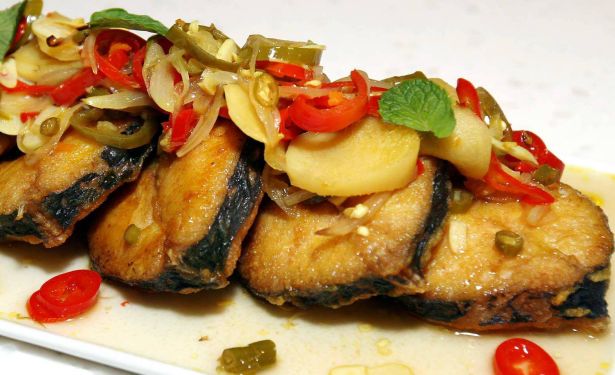Recipe Description
Soup holds a significant place in Chinese dinners, especially for the Cantonese, and this tradition extends to festive seasons. While it is common to showcase extravagant ingredients like abalone and fish maw during Chinese New Year, lotus root soup remains a more prevalent choice and is usually the go-to soup in my household. This soup is popular during Chinese New Year due to the phonetic similarity between lotus roots and the expression “year of plenty” in the Chinese language. Such phonetic associations hold significance among the Chinese, especially during festive events as they are considered auspicious.
Lotus root possesses a unique characteristic: although its raw rhizome appears white or pink, a prolonged simmering process is essential to extract its flavour, transforming the root and broth into a deep red tone.
Consequently, lotus root soup is a dish that demands patience, even though pressure cookers can expedite the cooking time. Typically simmered for 3 hours, a pressure cooker can reduce this duration to just 1 hour while achieving the desired richness and depth of flavour.
To enhance both colour and flavour, some prefer adding peanuts to the soup. Given that peanuts require more time to soften, many home cooks opt to boil them separately for about an hour before incorporating other ingredients. Frying the peanuts before boiling introduces an additional layer of flavour and smokiness to the soup, but it’s crucial to blot out excess oil to prevent cloudiness. Additional pre-boiling may be necessary to further soften the fried peanuts.
Arrowroot is another optional ingredient that contributes flavour and body to the soup. These should be cut into small cubes of approximately 2-3 centimetres to avoid large chunks in the final dish. While Cantonese tradition dictates the inclusion of red jujube, using mushrooms instead can infuse more umami, especially for those not fond of Chinese dates.
Regardless of whether you’re using pork or chicken, it’s essential to blanch or parboil the meat before adding it to the pot, especially if you’ve been collecting bones and carcasses for your broth. This step is crucial for removing any remaining blood, excess oil, and undesirable odour from the meat, ensuring a cleaner and more refined flavour in your soup.
For those with vegetarian preferences, my mother-in-law prepares a meat-free version of the soup, boiling the meat separately. Once both soups are ready, she portions out a vegetarian serving before reuniting the meaty soup back into the pot. This thoughtful approach allows her to cater to diverse preferences within the family while adhering to her cherished recipe.
Recipe Ingredient
- 1 spent hen
- 1 chicken carcass
- 200g lotus root, sliced
- 200g arrowroot, cubed
- 15g dried shiitake mushrooms
- ½ cup hot water
- 225g raw peanuts
- ¼ cup cooking oil
- 2 litres water
- 2 tsp salt to taste
Instructions
- Soak the mushrooms in hot water until rehydrated.
- Parboil the chicken carcass and spent hen separately in boiling water for about 5 minutes to remove blood, oil and odour.
- Fry the peanuts in cooking oil until crispy and lightly golden. Strain excess oil in a wire mesh, then spread the peanuts on paper towels to blot excess oil.
- Place all the ingredients into a pressure cooker to boil under high pressure for one hour to extract the flavour and soften all ingredients.
- Season with salt to taste.
- Alternatively, simmer over the stove for 3 hours until soft. Enjoy steaming hot.









